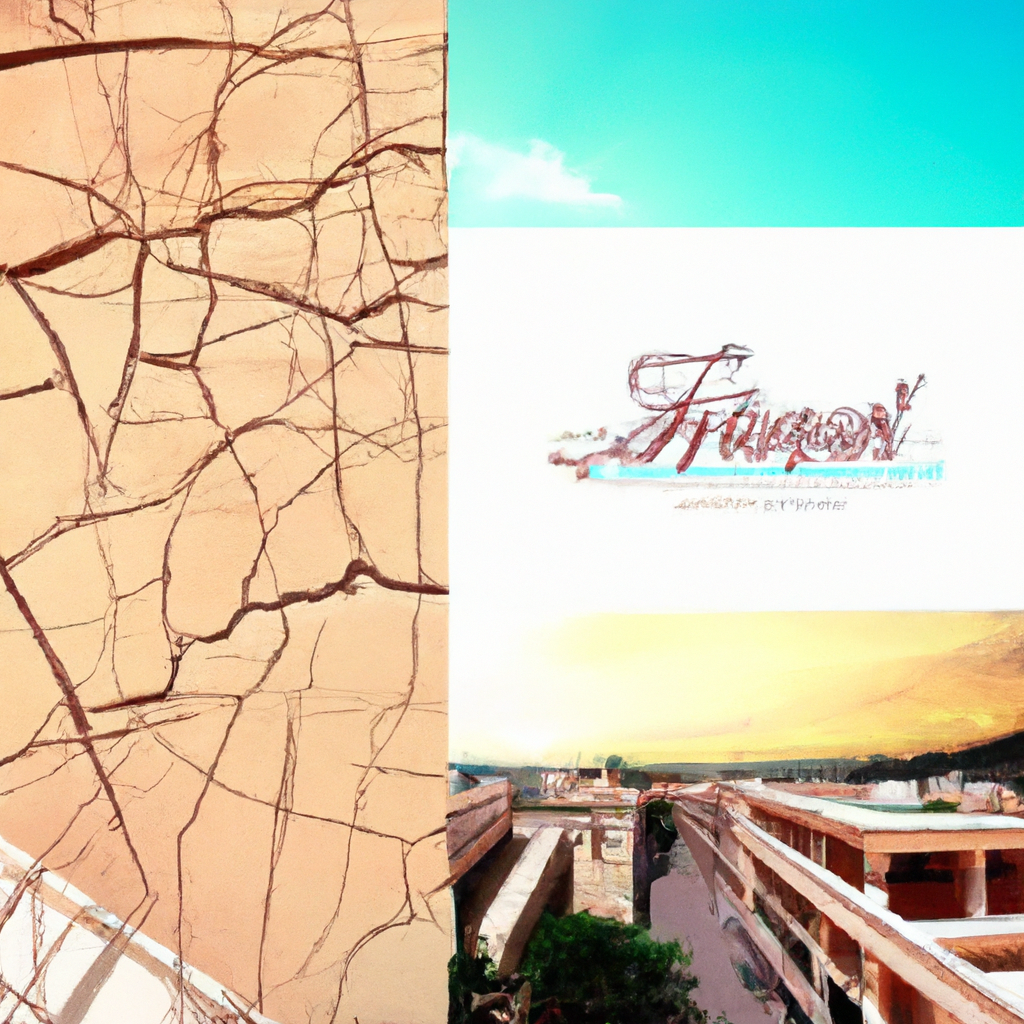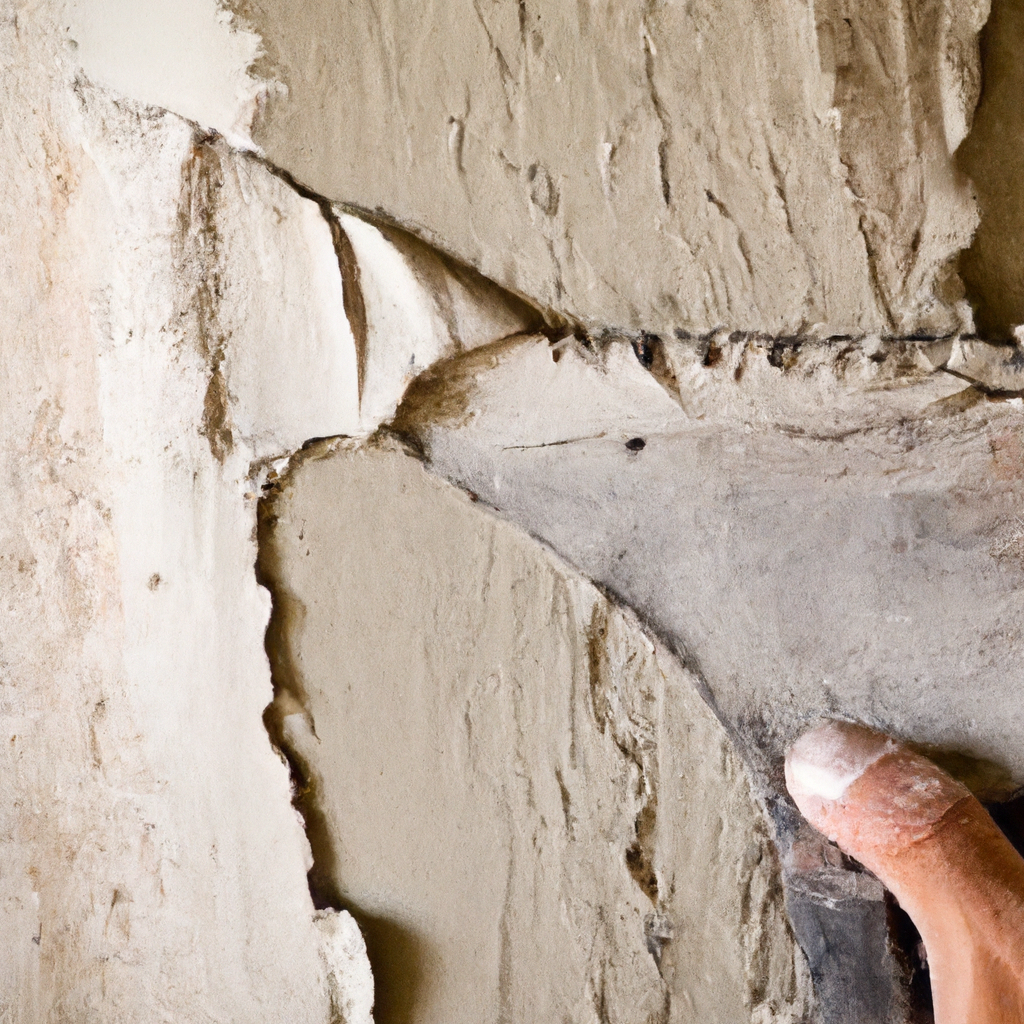Are unsightly cracks in your stucco ruining the look of your home? Say goodbye to those pesky cracks with our expert stucco crack repair service. Whether it’s a small hairline crack or a larger fissure, our team of skilled professionals will restore your stucco to its original beauty. Say hello to a flawless exterior and wave goodbye to those bothersome cracks. With our top-notch repair techniques, your home will regain its curb appeal in no time. Trust us to take care of your stucco crack woes and leave you with a stunning, crack-free home.
Common Causes of Stucco Cracks
Stucco cracks can be a common and frustrating problem for homeowners. Understanding the causes of these cracks is essential for effectively repairing and preventing them in the future.
Settlement of the Foundation
One of the most common reasons for stucco cracks is the settlement of the foundation. As the ground underneath a building shifts and settles, it can cause stress on the stucco exterior, leading to cracks. This is particularly true in areas with unstable soil conditions.
Moisture Damage
Moisture can be another culprit behind stucco cracks. When water infiltrates the stucco surface, it can cause the material to expand and contract, eventually leading to cracks. Additionally, prolonged exposure to moisture can weaken the stucco and make it more susceptible to cracking.
Temperature Changes
Extreme temperature changes can also cause stucco cracks. When the stucco is subjected to rapid shifts in temperature, such as from hot to cold or vice versa, it can expand and contract, leading to cracks. This is especially true in regions with significant seasonal temperature variations.
Structural Problems
Stucco cracks can also be a result of underlying structural problems in a building. Issues such as improper footing, insufficient wall support, or inadequate framing can lead to excessive stress on the stucco, causing it to crack. Identifying and addressing these structural issues is crucial for long-lasting stucco repair.
Poorly Installed Stucco
Sometimes, stucco cracks can be traced back to faulty installation. If the stucco was not properly mixed, applied, or allowed to cure, it can result in weak spots that are prone to cracking. Hiring experienced and reputable contractors for the initial stucco installation is essential to prevent future cracking issues.
Improper Mixing of Materials
Lastly, the improper mixing of stucco materials can contribute to cracks. It is crucial to follow the manufacturer’s instructions when mixing the stucco patching compound. Using the wrong ratio of water to powder or adding improper additives can compromise the integrity of the stucco, leading to cracks.
Assessing the Severity of Stucco Cracks
When it comes to repairing stucco cracks, it is essential to assess the severity of the damage. Understanding the different types of cracks can help determine the appropriate repair methods.
Hairline Cracks
Hairline cracks are thin and barely noticeable cracks on the stucco surface. They are generally superficial and do not extend through the entire thickness of the stucco. These cracks can be easily repaired with minimal effort.
Vertical Cracks
Vertical cracks run up and down along the stucco surface. They can vary in width and depth. Vertical cracks are often caused by settling or structural movement and may indicate a more significant underlying issue. Repairing vertical cracks may require more extensive measures compared to hairline cracks.
Horizontal Cracks
Horizontal cracks travel horizontally across the stucco surface. They can be an indication of excessive stress or movement in the building’s structure. Horizontal cracks should be assessed carefully as they may require professional expertise to identify and address the root cause of the issue.
Stair-Step Cracks
Stair-step cracks form a pattern resembling a staircase. They often occur in areas where there are joints or seams. Stair-step cracks can be an indication of settling or shifting in the foundation or walls. Repairing these cracks may involve more complex techniques and may require professional assistance.
Wider Cracks
Wider cracks, typically exceeding 1/8 inch in width, are considered significant and should be treated with urgency. These cracks can suggest severe structural issues, water infiltration, or movement in the building. Seeking professional help is highly recommended for inspecting and repairing wider cracks.

Tools and Materials for Stucco Crack Repair
Having the right tools and materials is crucial for a successful stucco crack repair job. Here are the essential items you will need:
Safety Gear
Safety should always be a priority during any repair project. Wear protective gloves, safety goggles, and a dust mask to prevent injuries and minimize exposure to dust and debris.
Masonry Chisel
A masonry chisel will be used to remove loose stucco and create a clean surface for the patching compound.
Hammer
A hammer is necessary for tapping the chisel gently and breaking away any loose stucco.
Wire Brush
A wire brush is useful for scrubbing and cleaning the stucco surface, ensuring proper adherence of the patching compound.
Water Hose
A water hose or pressure washer is needed to wet the stucco surface before applying the patching compound.
Stucco Patching Compound
The stucco patching compound is the primary material used to fill in and repair the cracks. There are various types available, including premixed compounds or powders that require mixing with water.
Latex Bonding Agent
A latex bonding agent is essential for improving the bond between the old and new stucco. It ensures a more durable and long-lasting repair job.
Trowel
A trowel is necessary for applying the patching compound smoothly and evenly onto the stucco surface.
Stiff Bristle Brush
A stiff bristle brush can be helpful for blending the repaired area with the surrounding stucco, creating a seamless finish.
Paintbrush
A paintbrush may be needed for applying a primer or sealant over the repaired area once the patching compound has dried.
Preparing the Stucco Surface for Repair
Before beginning the stucco crack repair process, it is essential to prepare the stucco surface. This involves cleaning the area, removing loose stucco, and wetting the surface.
Cleaning the Area
Start by removing any dirt, debris, or loose stucco from the crack and its surrounding area. Use a wire brush or a stiff bristle brush to scrub away any loose particles. This step ensures a clean surface for the patching compound to adhere to.
Removing Loose Stucco
After cleaning the area, carefully inspect the crack for any loose or unstable stucco. Use a masonry chisel and hammer to gently tap and remove any loose material around the crack. Ensure that the edges of the crack are clean and free from debris.
Wetting the Surface
Before applying the patching compound, thoroughly wet the stucco surface using a water hose or pressure washer. Wetting the surface helps prevent excessive water absorption from the patching compound, allowing it to cure uniformly. However, make sure the stucco is not overly saturated.

Methods for Repairing Stucco Cracks
Different methods are available for repairing stucco cracks, depending on the severity and type of crack.
Hairline Crack Repair
For hairline cracks, a simple patching compound can be used. Prepare the mix according to the manufacturer’s instructions and apply it over the crack using a trowel or putty knife. Smooth the surface with a trowel, ensuring a seamless blend with the surrounding stucco.
Patch Repair for Small Cracks
For small cracks, follow similar steps as hairline crack repair. However, it may be necessary to widen the crack slightly with a masonry chisel before applying the patching compound. This will ensure proper adhesion and structural integrity.
Filling Wider Cracks
Wider cracks often require additional reinforcement to prevent them from reoccurring. Use a latex bonding agent to prepare the crack for the patching compound. Mix the stucco patching compound to the desired consistency and apply it using a trowel. For wider cracks, it may be necessary to apply the compound in layers, allowing each layer to dry before applying the next.
Stair-Step Crack Repair
Repairing stair-step cracks typically involves more extensive measures. It may require removing the damaged stucco, addressing the underlying structural issue, and reapplying new stucco. Professional assistance is recommended for this type of repair to ensure proper identification and resolution of the root cause.
Structural Repair
In cases of extensive structural damage, repairing stucco cracks alone may not be sufficient. It is crucial to address the underlying structural issues to prevent further damage. Seeking professional help from a structural engineer or contractor is essential to ensure a thorough assessment and comprehensive repairs.
Step-by-Step Guide for Stucco Crack Repair
Now that you are familiar with the methods for each type of stucco crack, here is a step-by-step guide for a typical stucco crack repair:
Step 1: Prepare the Surface
Clean the crack and its surrounding area using a wire brush or stiff bristle brush to remove debris and loose stucco.
Step 2: Apply Bonding Agent
Using a paintbrush, apply a latex bonding agent to the cleaned crack. This will improve the adhesion between the old and new stucco.
Step 3: Mix Stucco Patching Compound
Follow the manufacturer’s instructions to mix the stucco patching compound. Achieve a smooth consistency to ensure proper application.
Step 4: Apply the Patching Compound
Using a trowel, apply the patching compound over the crack in even layers. If necessary, apply multiple layers, allowing each layer to dry before applying the next.
Step 5: Smooth the Surface
Once the patching compound has dried, use a trowel or stiff bristle brush to smooth the surface. Blend the repaired area with the surrounding stucco for a seamless finish.

Tips and Precautions for Stucco Crack Repair
While performing stucco crack repair, keep these tips and precautions in mind to achieve the best results:
Protecting Surrounding Areas
Cover and protect any nearby surfaces, windows, or landscaping to prevent damage during the repair process. Use plastic sheets or drop cloths to shield the surroundings.
Working in Small Sections
Divide the repair job into manageable sections, especially for larger cracks or comprehensive repairs. This will help ensure that each section is properly addressed and allows sufficient drying time.
Allowing Sufficient Drying Time
Follow the manufacturer’s instructions for drying time before applying additional layers or finishing touches. Rushing the drying process can compromise the effectiveness and longevity of the repair.
Painting or Sealing the Repaired Area
After the patching compound has fully cured, consider applying a coat of primer or sealant to protect the repaired area from future moisture infiltration or damage. This step can help prolong the life of the repair.
When to Seek Professional Help
While many stucco crack repairs can be done by homeowners, certain situations may necessitate professional assistance. Consider seeking professional help in the following circumstances:
Extensive Structural Damage
If the stucco cracks are accompanied by significant structural issues, such as sagging walls, shifting foundation, or major settlement, it is crucial to consult a structural engineer or contractor. They will be able to identify the underlying cause and provide appropriate solutions.
Recurring Cracks
If cracks reoccur despite repeated repairs, it may indicate an ongoing issue that requires professional expertise. An experienced contractor can perform a thorough inspection and determine the root cause to prevent future cracking.
Lack of Experience or Expertise
If you are unsure about your abilities to properly repair stucco cracks, it is always safer to consult a professional. They have the necessary training, knowledge, and experience to handle complex repairs and ensure long-lasting results.

Preventing Future Stucco Cracks
While repairing stucco cracks is essential, taking preventive measures can help minimize the occurrence of future cracks. Consider the following strategies for preventing stucco cracks:
Proper Maintenance
Regularly inspect and maintain your stucco exterior. Ensure that any minor cracks or damage are promptly repaired to prevent them from worsening.
Regular Inspections
Schedule regular inspections of your stucco exterior by professionals. They can identify early signs of damage or issues and provide recommendations to prevent further damage.
Addressing Water Issues
Water infiltration can significantly contribute to stucco cracks. Make sure your gutters, downspouts, and drainage systems are functioning correctly, directing water away from the stucco surface.
Professional Stucco Installation
When it comes to stucco installation or major repairs, always hire reputable and experienced professionals. Proper installation techniques and high-quality materials can significantly reduce the risk of future stucco cracks.
Conclusion
Stucco cracks can be a common and frustrating issue for homeowners. Understanding the common causes of these cracks, assessing their severity, and having the right tools and materials are crucial for successful stucco crack repair. By following the step-by-step guide and taking necessary precautions, you can effectively repair stucco cracks and prevent future damage. Remember, when in doubt or faced with significant issues, always consult with professionals to ensure a thorough and long-lasting repair job.


